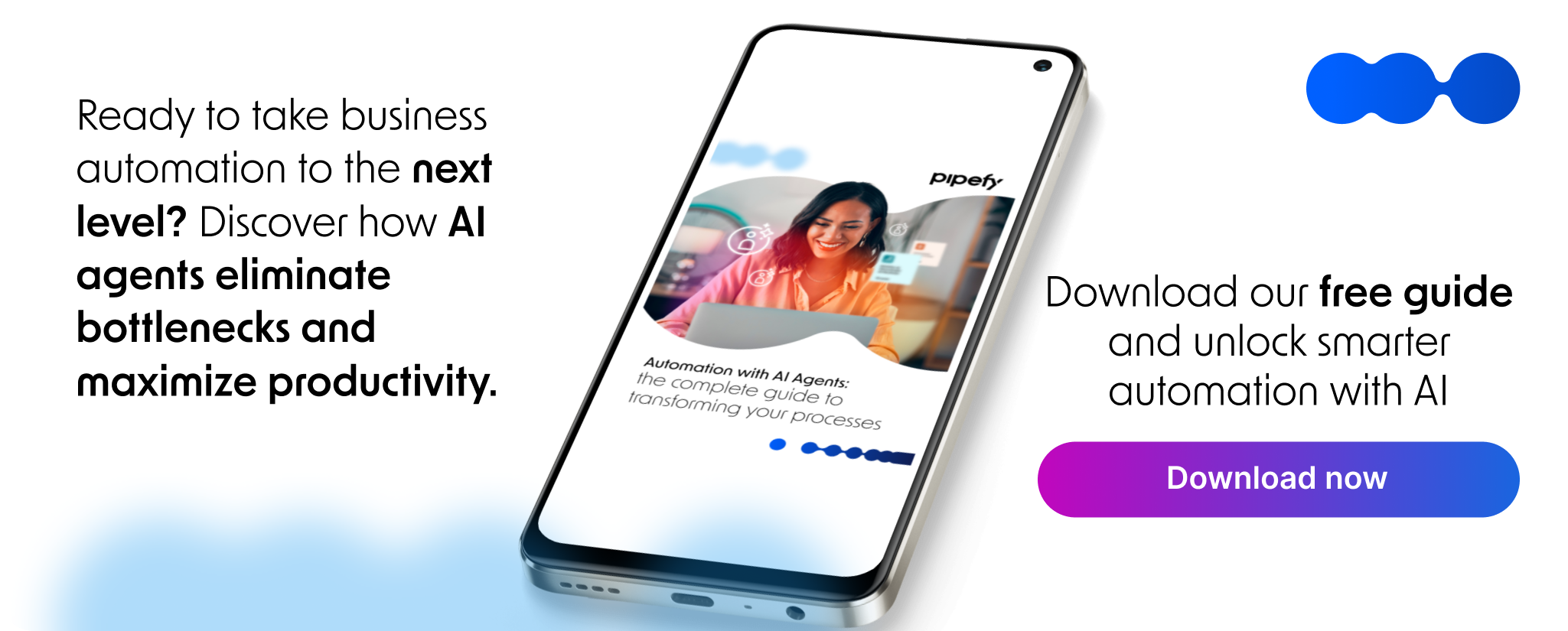
In many companies, NPI — New Product Introduction — is still a chaotic blend of spreadsheets, siloed emails, and over-engineered project plans that rarely deliver on time. But it doesn’t have to be that way. The path from idea to market-ready product can be structured, efficient, and intelligent.
By transitioning from manual processes to structured, low-code NPI workflows, teams can enforce compliance, automate decisions, and get full visibility over product development. This article offers a step-by-step playbook for designing a modern NPI process using platforms like Pipefy—powered by AI agents—to digitize, streamline, and optimize every phase.
Let’s dive into a playbook that shifts your NPI process from reactive to repeatable.
Why rethink your NPI process?
Traditional NPI processes often fail due to:
- Lack of standardized stages
- Disconnected communication between teams (R&D, QA, marketing, etc.)
- No real-time Analytics / Monitoring
- Manual approvals slowing down progress
- No audit trail or visibility
These gaps create delays, compliance risks, and missed market opportunities. That’s why a digital, stage-gated new product introduction workflow—built on automation and AI—is now essential.
Read more: How to Detect Anomalies in Business Data with AI Agents

Step-by-Step: the practical NPI playbook
1. Intake & Idea Capture
- What happens: Employees submit product ideas via forms or internal suggestion channels.
- Automation Tip: Use a Pipefy form to centralize idea submissions, powered by AI to auto-categorize entries.
- AI Agent Assist: Tag ideas by priority, product line, and business impact using AI-generated insights.
2. Initial evaluation
- What happens: Product management evaluates technical feasibility and market potential.
- Automation Tip: Trigger an automated checklist and assign reviewers based on category or business unit.
- Workflow / Case Mgt: Ensure each idea follows a structured case path for documentation and review.
3. Business Case & Approval
- What happens: Detailed cost analysis, ROI, resource forecasting.
- Automation Tip: Route business case forms for automated multi-level approvals.
- Analytics / Monitoring: Use dashboards to compare approval times and bottlenecks by product type.
4. Development Kickoff
- What happens: Cross-functional teams are assigned, timelines are defined.
- Automation Tip: Launch a templated development workflow with predefined phases: Design, Engineering, QA, etc.
- Low-code NPI workflows ensure adaptability—customize per product complexity without coding.
5. Stage-Gate Reviews
- What happens: Projects are paused at predefined checkpoints for executive or compliance review.
- Automation Tip: Use conditional logic to trigger gate reviews only when necessary (e.g., based on risk score).
- AI Agent Assist: Summarize stage progress and auto-generate gate review briefs from task logs.
6. Pilot & Launch
- What happens: Product enters limited release or pilot testing before full rollout.
- Automation Tip: Create testing workflows integrated with feedback loops. Auto-notify stakeholders of results.
- Analytics / Monitoring: Track pilot performance vs. KPIs in real time, using visual dashboards.
7. Post-Launch Monitoring
- What happens: Ongoing analysis of product adoption, support issues, and updates.
- Automation Tip: Trigger surveys or field reports post-launch. Route findings to the responsible teams.
- Workflow / Case Mgt: Any post-launch improvements can be routed back into a continuous improvement workflow.
NPI process engineer checklist
Before you move to a live demo with Pipefy, walk through this checklist to visualize your NPI automation journey:
- Do we have a standardized intake form for new product ideas?
- Are product concepts routed through a consistent evaluation workflow?
- Is our business case approval centralized and auditable?
- Can we kick off development projects with pre-set templates?
- Do we have automated Stage-Gate controls based on product risk or complexity?
- Is our launch-to-feedback loop automated and connected?
- Do we track product success metrics in a live dashboard?
- Have we defined AI Agents’ roles in insights, approvals, and summarization?
Read more: No-code AI Agents Development: What Your Company Needs to Know
How Pipefy supercharges NPI with AI
Pipefy is a low-code platform designed for structured processes like new product introduction workflows. Its built-in automation engine, AI Agents, and flexible templates empower teams to:
- Launch low-code NPI workflows tailored to any industry
- Automate task assignments, approvals, and document generation
- Enable AI Agents to flag delays, generate summaries, and suggest improvements
- Visualize real-time performance with built-in Analytics / Monitoring
- Enforce compliance and maintain an auditable digital trail
Best of all, it requires no IT dependency to evolve the workflow—process engineers can configure and iterate autonomously.
Final thoughts: from spreadsheet to strategy
You don’t need another spreadsheet. You need a playbook—and a platform—that makes your NPI process repeatable, data-driven, and intelligent.
With Pipefy, powered by AI agents, your team can move from chasing emails to executing strategy. You gain visibility. You enforce standards. And most importantly, you deliver products faster and smarter.
If you’re ready to bring this playbook to life, try building your first new product introduction workflow with Pipefy. With drag-and-drop customization, AI-assisted automations, and rich Analytics / Monitoring, it’s your path to operational excellence in digital product development.
Click the button below, schedule a demo and see the first results in just a few weeks.
NPI + AI: 5 frequently asked questions (FAQ)
1. How can AI agents enhance my NPI process?
AI agents help by automating categorization, summarizing stage progress, predicting delays, and even recommending next steps—based on historical data and task behavior.
2. What is the biggest benefit of moving to a low-code NPI workflow?
You reduce errors, eliminate silos, and accelerate time-to-market—without relying on custom development. Process iterations become faster and cheaper.
3. Can automation support compliance in regulated industries?
Yes. Workflow automation ensures every step is documented, approvals are auditable, and data is securely handled—critical in industries like pharma or aerospace.
4. What’s the difference between Stage-Gate and Agile NPI workflows?
Stage-Gate offers structured checkpoints; Agile promotes iterative delivery. Pipefy allows blending both—stage-gating with embedded Agile sprints per development phase.
5. How long does it take to implement an NPI workflow in Pipefy?
Basic workflows can be deployed in days. Full rollouts with AI-powered analytics and integrations typically take 3–6 weeks, depending on complexity.







